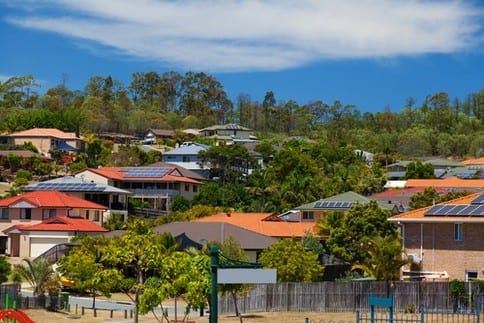The Labor government in the state of Victoria has announced new legislation that will prevent electricity retailers from refusing discounts to households with rooftop solar arrays.
There has been increasing anecdotal evidence that solar households – not just in Victoria – have been deprived access to power discounts, have been offered lower discounts because of their connection, or are charged higher tariffs because of their solar arrays.
Victoria energy minister Lily D’Ambrosio announced the move as part of a suite of changes to the state’s Electricity Industry Act, including attempts to protect consumers struggling to pay their electricity bills and facing disconnection.
D’Ambrosio said the amendments would “prohibit retailers from including eligibility criteria in their supply offers that restrict customers who have solar or other renewable energy generation from taking up an offer that would otherwise be available to them.
“That is, while energy retailers may still make electricity sale offers that are specific to solar and renewable energy customers, such customers must also be able to access the same offers as any other customer.
“This will ensure that current incentives for investment in solar and other renewable energy sources are not adversely impacted by energy retailers imposing higher charges for this customer group.”
The Victorian government and the Labor government in Queensland have both promised a review into the “fair price” of solar, in light of moves to cut the feed-in tariff for exports of solar power back to the grid.
In Victoria, it has been cut to 5c/kWh from 6.2c/kWh, and in NSW is has been cut to 4.8c/kWh from 5.6c/kWh, and the tariff is voluntary anyway. Similar cuts have occurred in other states.
The rate of the feed-in tariff is not the only issue. Solar advocates are also upset at rising fixed charges which make it less attractive for households to install solar. For instance, in Queensland, low energy users are being charged the equivalent of 72c/kWh for their electricity, and half of this cost is unavoidable fixed charges.
In South Australia, the network operator is seeking to impose higher network charges on solar households, and in Western Australia, households are not allowed to export solar back into the grid if they own battery storage or an electric vehicle.
The Queensland government recently released its terms of reference into its inquiry, and announced the appointment of Kim Wood, a former head of government-owned coal-fired generator, Stanwell Corporation, as the principal commissioner of the Productivity Commission.
Stanwell has repeatedly complained that solar is reducing its profits and called for solar subsidies to be removed.
Queensland Treasurer Curtis Pitt said Wood would launch an inquiry into electricity prices generally, and also into a “fair price” for solar. Queensland is targeting a doubling in its solar PV numbers to one million homes and 3,000MW of rooftop solar capacity.
“This inquiry will investigate the public and private benefits of rooftop solar, including social, economic and environmental benefits,” he said in a statement. “These inquiries are a key part of our commitment to build the renewable energy industry in Queensland.”
Both the electricity pricing and solar reviews are expected to report in the first half of 2016.
The solar industry has been aghast at the level of feed-in tariffs assigned by pricing regulators in recent years. Some tariffs – in NSW and in south-east Queensland – are voluntary, and in most other states and regions are less than one-quarter of the retail price. In some instances, they are just 1/10 of the peak power price.
This contrasts dramatically with the situation in the US, where most states have a one-for-one tariff, and studies commissioned by regulators there either give a value for solar nearly equivalent to the grid price, or in one study in Maine, at nearly three times the value.
In Australia, however, some think that the question of a FiT is going to become academic, because Australia’s electricity price is so high, and the solar resource so good, that battery storage will become attractive very quickly.
The NSW pricing regulator seemed to suggest that having low feed-in tariffs was a deliberate strategy to make it happen.
With storage, households and business would have no incentive to export back into the grid. That could increase grid stability, but could cause problems for revenue collection for grid operators and retailers, unless they can create new business models such as “virtual net metering” currently being trialled by Ergon Energy.











